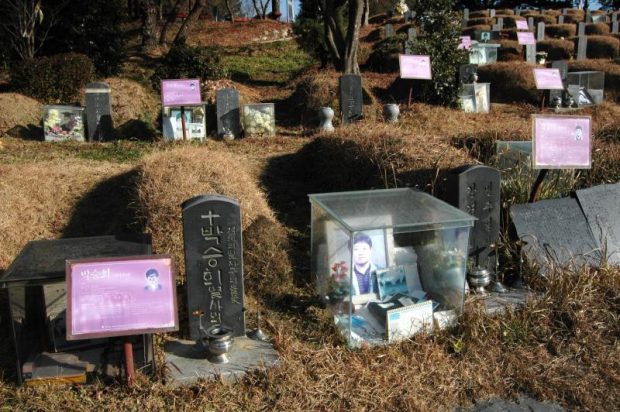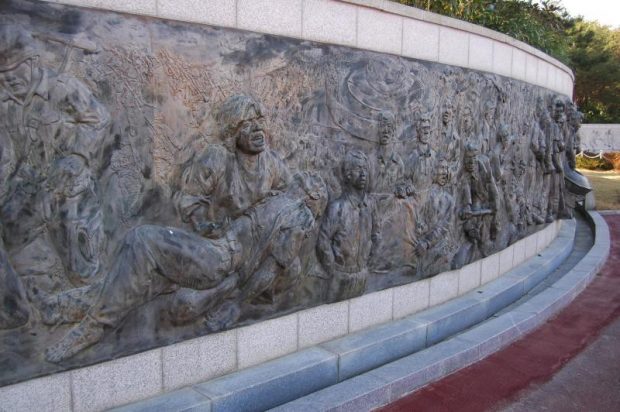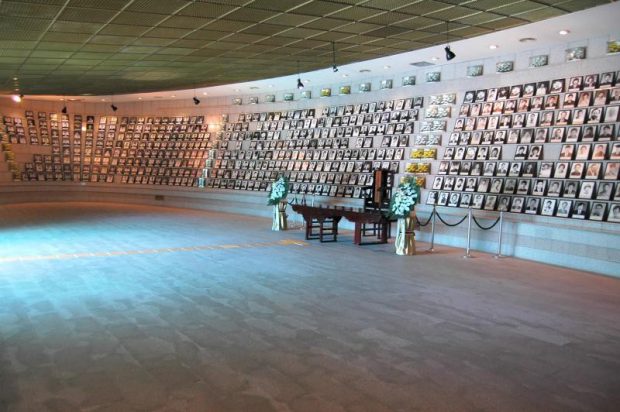40 years later, Gwangju’s heroic movement remains deeply entrenched in South Korea’s collective memory

May 18 Memorial Cemetery in Gwangju (medium.com)
By Habib Toumi
During my first visit to South Korea in 2019, I had the chance to discover several beautiful cities, amazing edifices, attractive sites and breathtaking landscapes.
From mountains to seas, from simple temples to complex structures, from sophisticated areas to natural attractions, the country presented a multitude of features that made the trip memorable and the days unforgettable.
Yet, amid all the bewildering sophistication and brilliant modernism, the most poignant places I saw were the Demilitarized Zone (DMZ), the scarred area between the two Koreas, and the May 18 National Cemetery in Gwangju, the martyred city in the south of the country.

May 18 Memorial Cemetery in Gwangju (medium.com)
I visited Gwangju, the “City of Peace, with journalists from several countries as we attended the World Journalists Conference organized by the Journalists Association of Korea.
Gwangju was an emotional stop on our trip across the peninsular country. We found a vibrant metropolitan city full of vitality, energy, and excitement where traditions and modernism co-existed peacefully and harmoniously without the clashes that usually occurred between the two vastly different worlds.
The picturesque nature and the exquisite scenery surrounding the city nestled in the Southwestern part of South Korea offered a soothing feeling of tranquility and peace.
Peace is a very precious word in this city that exactly 40 years ago was the theater of a massacre that reverberates in the collective memory of South Korea in general and Gwangju in particular until today, a scar that has not healed, remaining painfully open for many Koreans.
It was here that on May 18, 1980 brave people massively protested against military oppression, sacrificing their lives so that their fellow citizens could live in peace and dream of a better future.

May 18 Memorial Cemetery in Gwangju (medium.com)
Hundreds died or disappeared in one of the major calamities to hit the country. However, their sacrifices were not wasted. Their valiant action eventually helped build modern Korea and consecrated peace and democracy as the foundations for a life in dignity for all Koreans.
What happened here 40 years ago remains vivid, deeply entrenched in the collective memory of the city and the country.
The profound impact on Korea could be still passionately felt everywhere, but mainly in the May 18 National Cemetery, the “holy ground for democracy” and the symbol of freedom where the victims of the May 18, 1980 uprising for democracy are buried.
Inside it, the two 40-meter parallel pillars, based on a traditional Korean “flagpole” design, make up the Memorial Monument that represents the concepts of new life, survival, and seeds of hope.
Looking at the cemetery and learning from our guides how the demonstrations began as small protests and ended in a full-blown insurrection, I compared the situation with the revolutions that swept across Eastern Europe and some Arab countries and brought about regime change and promises of better lives. The promises materialized in Europe, but not in the Arab countries.

May 18 Memorial Cemetery in Gwangju (medium.com)
Through the conversations we had and the observations we made, it was clear that Koreans, and particularly people from Gwangju, were still highly emotional about the uprising, the blood that had been spilled and the lives that had been lost to ensure that peace and dignity prevailed in their country.
For them, peace and dignity are the robust foundations for everything that could build a nation and as such they deserved to be duly protected and cherished.
Many of the city residents were not born 40 years ago, but they are ready to talk about what happened and how it happened as if they had witnessed it. They talk about it in heroic terms, enthusiastic about the deep sense of sacrifices of their families, neighbors and the people of the city who dared show the way forward towards democracy.
Such a spirit, reinforced by regular visits organized for school students to the cemetery, will help ensure the perpetuation of the nation’s sense of sacrifice and commitment to peace.

























































